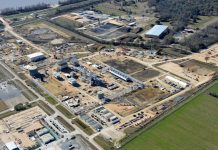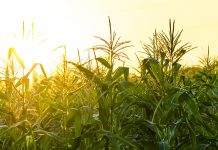by Debra Fiakas CFA
 The previous post “Solazyme’s Detours on the Way to Algae Biofuel” began a discussion of Solazyme, Inc. (SZYM: Nasdaq), a self-described “oil developer” targeting three commercial markets that are known heavy oil users: chemical and fuel, nutrition and skin care. Solazyme touts its ability to serve customers with oils tailored to their specific needs, creating a paradigm shift from the status quo where formulators and manufacturers must design around the limitations of conventional oils.
The previous post “Solazyme’s Detours on the Way to Algae Biofuel” began a discussion of Solazyme, Inc. (SZYM: Nasdaq), a self-described “oil developer” targeting three commercial markets that are known heavy oil users: chemical and fuel, nutrition and skin care. Solazyme touts its ability to serve customers with oils tailored to their specific needs, creating a paradigm shift from the status quo where formulators and manufacturers must design around the limitations of conventional oils.
Solazyme is attempting to harness the oil producing capability of microalgae – the most diminutive of algae. Based on average yield rates, biodiesel from oil crops, waste cooking oil and animal fat cannot realistically satisfy even a small fraction of existing demand for transport fuels, largest oil market. However, microalgae can produce up to 300 times more oil than conventional crops and have been clocked at growth speeds 20 to 30 times faster than oil-producing crops such as corn or soybean.
The exceptional efficiency derives from the simplicity of microalgae. Simple one-cell organisms, they take nutrients directly from the water where they live. They do not need the growth-sapping stems and stalks of crops growing in fields. What is more they are content to live in harsh environments such as seawater and wastewater.
The U.S. Department of Energy estimates that microalgae can produce enough oil to replace all petroleum fuel required in the U.S. market using less than 1% of the country’s land area. Even with such great promise of efficiency and productivity from algae, actual substitution of algae-based oil for petroleum has yet to begin. In part that is because scaling up production is not so easily accomplished.
Algae in the Dark
 Most algae rely on sunlight to drive photosynthetic processing of carbon dioxide. The first algae-based biofuel developers started with open ponds stocked with algae and exposed to year-round sun, only to find that as the ponds got larger they were beset with poor light diffusion near the center. What is more, the algae were stressed by changing weather conditions and airborne contaminants.
Most algae rely on sunlight to drive photosynthetic processing of carbon dioxide. The first algae-based biofuel developers started with open ponds stocked with algae and exposed to year-round sun, only to find that as the ponds got larger they were beset with poor light diffusion near the center. What is more, the algae were stressed by changing weather conditions and airborne contaminants.
To side step these problems Solazyme has tapped a special kind of algae that thrive in the dark – “heterotrophic” Chlorella. Instead of using photosynthesis to process carbon dioxide, heterotropic algae get carbon from sugars in a dark, watery environment. This makes it possible to put the algae indoors, housed in large, closed containers. There is no worry about light diffusion at the center of the pond or contaminants or weather conditions. The Japanese have been successful with Chlorella cultures in containers as large as 100,000 liters, generating useful biomass of hundreds of kilograms.
Solazyme uses cane-based sucrose or corn-based dextrose to feed its algae. The increased cost of buying a sugary lunch for the algae is at least partially offset by reduced costs of the containers or fermenters in which they are housed. That is because practically any fermenter used in food or pharmaceutical processes will work for heterotrophic algae. Standard fermentation containers mean lower costs.
Not all is smooth sailing for developers using hetertrophic algae. Competition with other microorganisms in the fermenter can put a damper on the algae’s oil production. Excess organic substrate can inhibit rather than fuel growth, making it necessary to fine tune the cultivation process and monitor it carefully.
Nonetheless, it is worth the try for Solazyme to be among the first to pursue hetertrophic algae cultivation. One study completed in 2006 by Chinese researchers found that the lipid content in certain heterotrophic algae were four times greater than algae cultures grown with photosynthesis. So besides using algae to produce oil – an organism that is substantially more efficient than another of the other “oil” crops like corn – Solazyme is using the most productive type of algae.
Investors in the Dark
It would seem logical that the chain of efficiencies would translate to commercial value and subsequently to shareholder value. Until a year ago Solazyme had only been able to scale production at a 75,000-liter facility operated by a partner. Last year the company began fermentation at a facility in Peoria, Illinois with multiple 128,000-liter fermenters and an annual oil production capacity in excess 2 million liters. Solazyme also has access to production capacity one the facilities owned by its joint venture with Roquette.
So far management has been a bit protective about yield rates, leaving investors in the same dark space as its algae. Solazyme is pushing forward with new production capacity. They broke ground for 100,000 metric commercial facility in Moema, Brazil earlier this year and more capacity is planned. Production yields would need to be significant to justify expansion of this level. Without disclosures, investors will just have to take management’s word for it – and the risk that they have overstepped. This risk may be one of the reasons the stock is trading at a level well off its IPO price of $18.00.
Debra Fiakas is the Managing Director of Crystal Equity Research, an alternative research resource on small capitalization companies in selected industries.
Neither the author of the Small Cap Strategist web log, Crystal Equity Research nor its affiliates have a beneficial interest in the companies mentioned herein.








